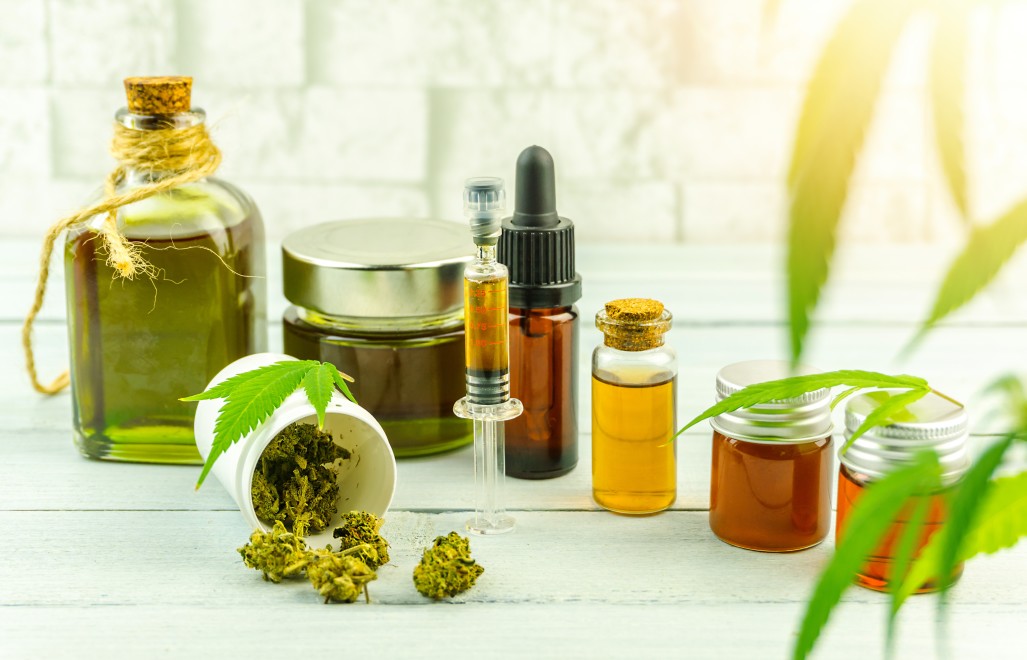WHAT IS CBD?
Cannabis comes from Indian hemp plants such as Cannabis sativa and Cannabis indicia. The main active chemical in cannabis is THC (delta-9 tetrahydrocannabinol). Cannabis is also known as grass, pot, hash, weed, reefer, dope, herb, mull, Buddha, ganja, joint, stick, buckets, cones, skunk, hydro, yarndi, smoke and hooch.
Cannabis is used in the treatment of chronic diseases. Experience shows that especially patients with diseases of the nervous system that are accompanied by severe muscle cramps, such as multiple sclerosis or paraplegia, benefit from the treatment.
Cannabis can also relieve the symptoms in chronic pain disorders.

But cannabis is always used in a multimodal treatment concept. As a pain reliever alone, cannabis has very little pain-relieving effect. The drugs used so far are clearly superior. Given the experience already available, experts do not expect cannabis to replace existing pain relievers, but above all for so-called neuropathic pain, that have not been adequately alleviated so far is helpful.
Neuropathic pain is dull, oppressive, pulling, sometimes electrifying and radiates along a nerve supply area.
The therapy with antidepressants and antiepileptics, which are used for this type of pain, is not always satisfactory. In individual cases, cannabis could support this as an additional treatment option, but not replace the existing medication.
Cannabis cannot only be inhaled. Some bakers, who are particularly inclined to the products of the hemp plant, swear by cannabis as a valuable baking ingredient.
The diverse variants of marijuana preparations are particularly suitable for medical purposes.
You have to get creative to enjoy delicious cookies and other pastries with the herbal drug.
With a few tips, every beginner can cook with cannabis.
CBD is one of over 60 compounds found in cannabis and belongs to a class of ingredients called cannabinoids.
Until recently, THC (tetrahydrocannabinol) received the most attention because it is the ingredient in cannabis that causes mind-altering effects in users, but CBD is also found in high concentrations – and the medical world knows their list of medicinal benefits continues consists grow.
CBD is the main non-psychoactive component of cannabis sativa.
According to a 2013 study published in the British Journal of Clinical Pharmacology, CBD benefits from acting as an anti-inflammatory, anticonvulsant, antioxidant, antiemetic, anxiolytic and antipsychotic agent in some experimental models and is therefore a potential drug for treating neuroinflammation, epilepsy, oxidative injury, Vomiting and nausea, anxiety and schizophrenia.
Research is beginning to show that the effects of CBD differ from other well-studied cannabinoids. All cannabinoids act as ligands, that is, they dock onto the binding site of a protein and have the ability to modulate the behavior of a receptor.
CB1 receptors are widespread, but are particularly common in areas of the brain including those concerned with movement, coordination, pain and sensory perception, emotion, memory, cognition, autonomic and endocrine functions.
CB2 receptors are found primarily in the immune system and appear to reduce inflammation and certain types of pain. Although cannabinoids all have similar structures, they display a wide range of effects on each of the different receptors.
However, scientists are finding that CBD has very little effect on CB1 and CB2 receptors, which likely explains why it has no mind-altering effects, unlike THC, which positively regulates the CB1 receptor.
For this reason, most marijuana grown for recreational purposes are typically very low in CBD and high in THC.

